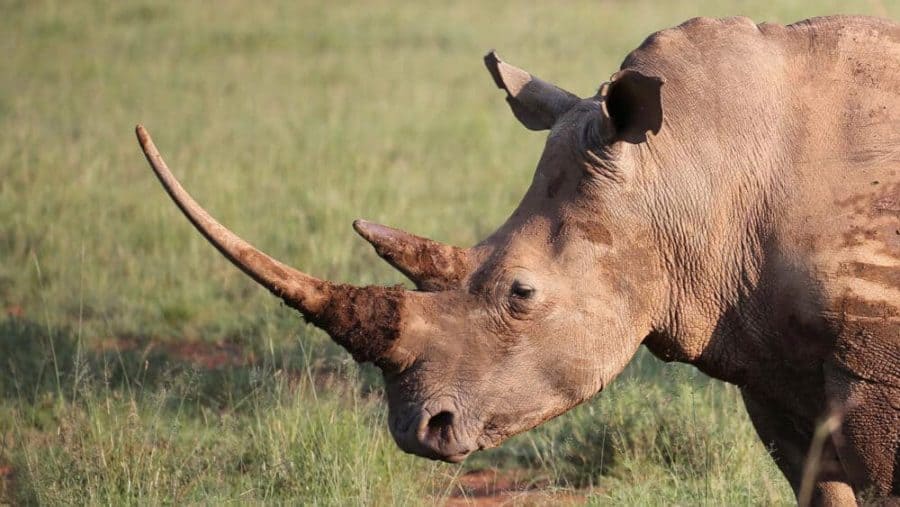A new study reveals how insect evidence is being used to determine time of death in rhino poaching cases across South Africa.
Summary: Researchers analyzed insect samples from 19 poached rhinos to estimate minimum post-mortem intervals, providing crucial evidence for wildlife crime investigations. The study highlights the growing application of forensic entomology in combating rhino poaching.
Estimated reading time: 7 minutes
In a new application of forensic science to wildlife crime, researchers in South Africa have demonstrated how insect evidence can help determine the time of death for illegally hunted and dehorned rhinoceros. The study, published in Medical and Veterinary Entomology, analyzed insect samples collected from 19 rhino carcasses between 2014 and 2021, offering new insights into the fight against poaching.
Insects as Timekeepers in Wildlife Crime
Forensic entomology, long used in human criminal cases, is now proving invaluable in wildlife investigations. The study, led by researchers Melanie Pienaar and Ian R. Dadour, examined 74 insect samples collected from rhino remains across five South African provinces. These samples, comprising 119 individual insects at various life stages, provided crucial data for estimating the minimum post-mortem interval (minPMI) in each case.
The researchers identified 18 insect species from 12 families belonging to three insect orders. However, six species from the Diptera (fly) and Coleoptera (beetle) orders were particularly significant for determining the minPMI:
- Chrysomya marginalis (13 cases)
- Chrysomya chloropyga (2 cases)
- Chrysomya albiceps (1 case)
- Chrysomya megacephala (1 case)
- Dermestes maculatus (1 case)
- Thanatophilus micans (1 case)
Challenges and Innovations in Wildlife Forensics
The study highlights both the potential and challenges of applying forensic entomology to wildlife crime. South Africa, which contributes approximately 90% of all rhinoceros horns entering illegal trade markets, has been at the forefront of developing these techniques.
Key challenges include:
- Remote crime scenes, often far from weather stations
- Limited on-site temperature data
- Delays in transporting evidence to laboratories
- Scavenger activity affecting insect colonization
Despite these obstacles, the researchers were able to estimate minPMIs for all 19 cases, providing valuable evidence for criminal investigations.
Training and Standardization
The study emphasizes the importance of proper training and standardized protocols. Over the last decade, 213 crime scene technicians across South Africa have received basic training in collecting insect evidence from both human and rhinoceros remains. This ongoing training is crucial for ensuring reliable entomological evidence.
Legal Impact and Future Directions
The forensic entomology reports for all 19 cases were accepted by South African courts without challenge, demonstrating the growing acceptance of this science in legal proceedings. In one notable case, the entomological evidence contributed to a perpetrator receiving a collective sentence of 24 years imprisonment.
As rhino poaching remains a critical threat, with South Africa reporting 6,684 illegally hunted and poached animals between 2014 and 2021, the development of forensic entomology offers a powerful new tool in wildlife conservation efforts.
The study concludes that South Africa’s high incidence of rhino poaching, while tragic, has provided a unique opportunity to refine and validate forensic entomology practices in wildlife crime investigations. This work not only aids in prosecuting poachers but also contributes to the global understanding of insect succession and development in varying climatic conditions.
“This has implications across both the science of forensic entomology and forensic wildlife, and especially highlights the opportunities for improving the global understanding of the procedures related to wildlife criminal cases,” said co–corresponding author Ian R. Dadour, PhD, of Source Certain and Murdoch University, in Australia. “Over the last 30 years, the results of this new activity combined with ranger teams and satellite tracking have led to a rebound in rhinoceros populations.”
Quiz: Test Your Understanding
- How many rhino carcasses were analyzed in this study? a) 6,684 b) 19 c) 74 d) 213
- Which insect species was used most frequently for estimating the minimum post-mortem interval? a) Chrysomya chloropyga b) Chrysomya albiceps c) Chrysomya marginalis d) Dermestes maculatus
- What percentage of rhinoceros horns entering illegal trade markets comes from South Africa? a) 50% b) 75% c) 90% d) 100%
Answers:
- b) 19
- c) Chrysomya marginalis
- c) 90%
Further Reading
- Medical and Veterinary Entomology – Full Study
- South African Police Service – Forensic Services Division
- International Union for Conservation of Nature – Red List of Threatened Species
Glossary of Terms
- Forensic Entomology: The application of insect science to criminal investigations
- Minimum Post-mortem Interval (minPMI): The minimum time elapsed since death, estimated using insect evidence
- Chrysomya: A genus of blowflies commonly used in forensic entomology
- Coleoptera: The order of insects that includes beetles
- Diptera: The order of insects that includes flies
- Accumulated Degree Days/Hours (ADD/ADH): A method for calculating insect development based on temperature over time
Enjoy this story? Get our newsletter! https://scienceblog.substack.com/


